
How to Choose a Fishing Rod for Beginners
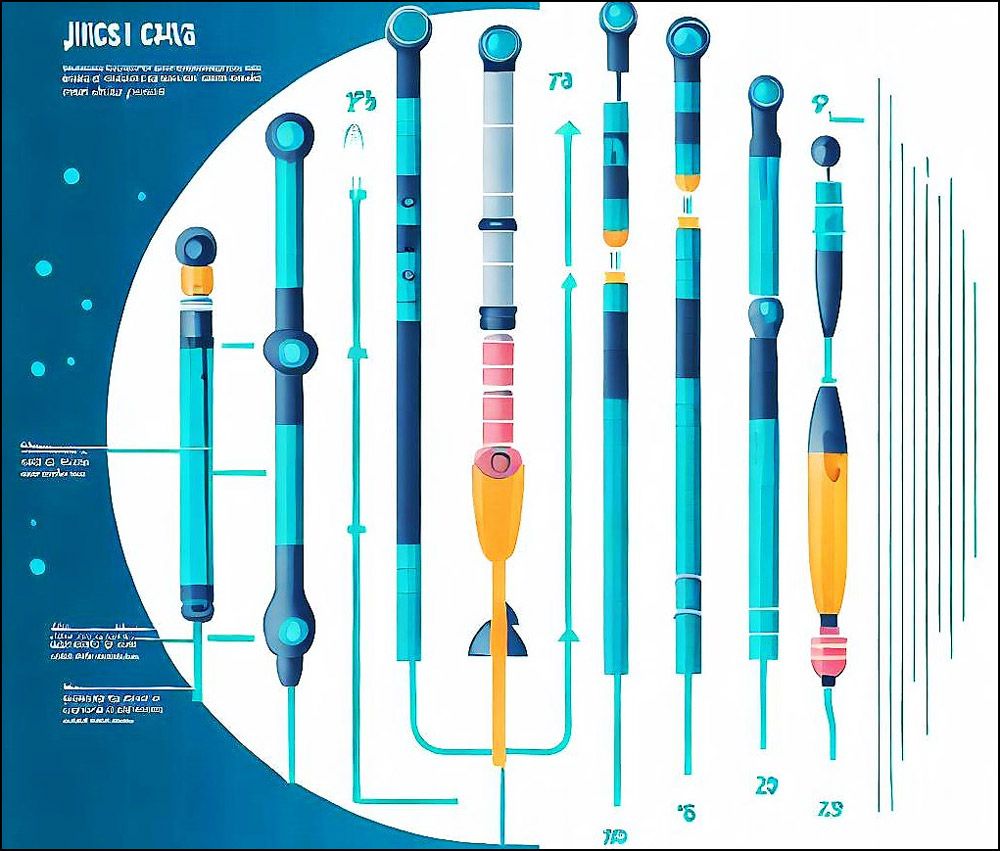
🎣 Catching the Right Start: Why Your Fishing Rod Matters
Selecting the right fishing rod can make a world of difference, especially for beginners. It’s much like a musician choosing their first instrument – it has to feel right, and it has to match their style of play. The same goes for fishing, the rod you choose is an extension of you, aiding in your quest to reel in a great catch. 🐟
Gearing Up: What This Article Offers You
In this article, we will guide you through the thrilling yet sometimes confusing process of choosing your first fishing rod. You’ll learn about the basics of fishing rods, the different types available, key factors to consider while picking one, some recommended models for beginners, and tips for maintaining your rod to ensure its longevity.
Stay hooked as we delve into this captivating world, demystifying the art of choosing the right fishing rod for a beginner. Whether you are gearing up for your first angling expedition or simply exploring new gear, this guide has you covered. 🎣👍
All You Need to Know for Novice Fisherman

The entire history of mankind is a struggle for survival. And the main thing in it is the production of food. This determined the survival of people on the planet. In the beginning, the most ambitious and affordable ways to provide food were hunting, collecting edible plants, fruits, and, of course, fishing.
The latter in those days was the most guaranteed because most of the settlements of people were located on the banks of reservoirs. It is difficult to imagine what they used to fish in those days. Although from archaeological excavations of settlements from the Neolithic era, it is known that even in those days, people got to fish with some fishing tools.
They were tridents, spears, and even primitive hooks made of stone, animal bones, and tree thorns. Archaeologists have also unearthed all sorts of traps that people used to use in rivers to catch fish. Among them are those that are found in places today. These are nets woven from vines, stakes, and so on.
Why Did the Fishing Rod Appear?
Probably, of all kinds of fishing gear, one of the first was the invented fishing rod. Some savage wandering along the bank’s rivers or seas for getting yourself scarce food noticed flocks of fish swimming near the banks. He saw hungry fish greedily grab the water falling to the surface of different insects and tree leaves, and maybe he threw them into the water, first amused only by the quick movements of the fish.
Very naturally he had the idea that if he could hide something in the insects that looked like a hook (made of bone or strong wood) and tie it on a thread made from animal veins or plant fibers, and that if the fish grabs and swallows such a nozzle, the hook will hook and the fish can be will be pulled ashore.
So, probably, the fishing rod was born; it is almost like this now in the villages of peasant boys: a crocheted nail without a hat, a hook made of wire or a pin, tied on a thread with a stone instead of a sinker and a stick of dry wood or reeds instead cladding. It’s almost a wild man’s rod. However, even with us, in the present, however, for the most demanding hunters, the fishing rod has strictly preserved all its original basic qualities.
When And Where Was The Fishing Rod Invented?

In fact, you won’t find an exact answer anywhere. There are many versions and what to believe is up to you. Personally, I’m more inclined to believe that the first fishing rod appeared in Egypt. Noble Egyptians loved to spend their free time fishing.
There are frescoes that depict dignitaries gravely fishing fish from special cages. Few people know that the Egyptian Queen Cleopatra was an inveterate angler. There is a case when the Roman General Mark Antony was in love with Cleopatra and decided to impress her and ordered a special diver to stick a fish on his hook during a joint fishing trip. Cleopatra having figured out his plan hired another diver.
In the end, Antony fished it out… salted fish. Surprisingly, reels for the fishing line were also invented by the Egyptians, however, they used them when hunting with a harpoon on a Hippo. Scientists found a granite bas-relief with the image of two burly men carrying a table, from which hangs a magnificent Nile lobby.
Among the documents preserved on papyri is a list of provisions delivered to the temples of Thebes and Memphis. There are Lobans, Nile Clarii, Chromis, and “Nile perches,” lathes so huge that each fish was carried by two men! Today, it is not known exactly who invented the fishing rod, but there is no doubt that four thousand years ago this invention was used in Egypt.
📚 Understanding the Basics
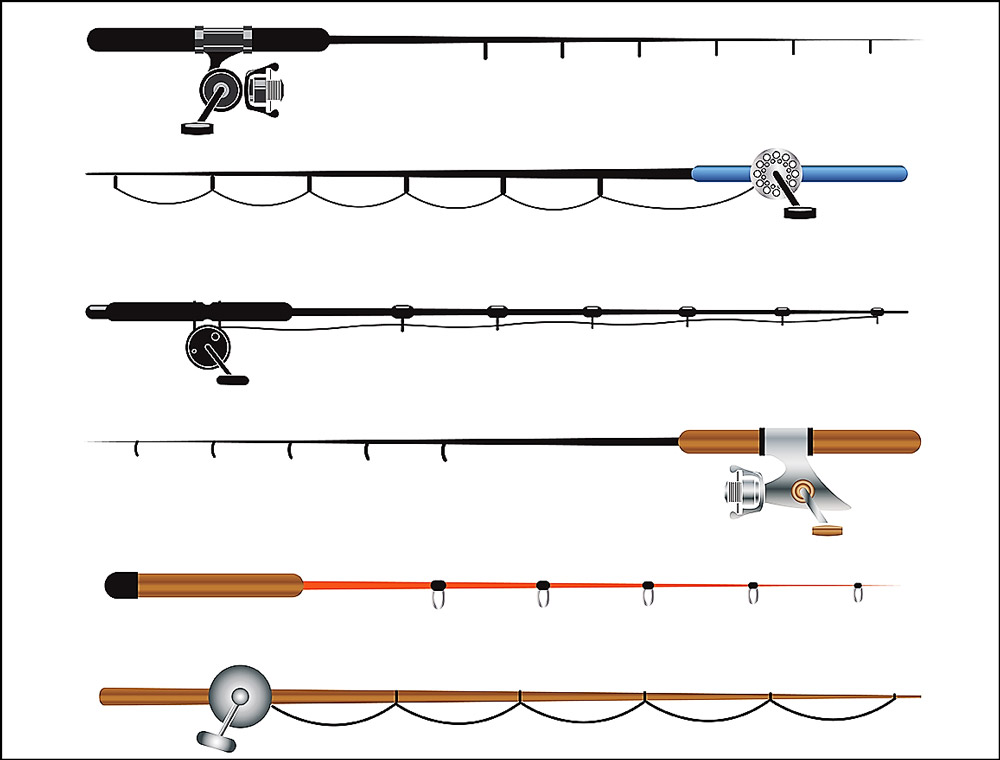
What is a Fishing Rod? 🎣
A fishing rod is a long, flexible rod used by anglers to catch fish. At its simplest, it is a simple stick or pole attached to a line ending in a hook. The length of the rod can vary between 2 and 20 feet. To entice fish, bait or lures are attached to the hook. In modern fishing, sophisticated fishing rods are equipped with features like reels, used to retrieve the fishing line efficiently.
Construction of Fishing Rod
| Part of the Fishing Rod | Description |
|---|---|
| Rod Blank | This is the core structure of the rod. It’s a long, usually tapered tube made of a variety of materials such as fiberglass, graphite, or composite. The rod blank determines the rod’s length, power, and action. |
| Handle or Grip | The handle is located at the end of the rod blank where the angler holds the rod. It can be made from various materials, including cork, EVA foam, or wood, depending on the type of rod and angler’s preference for comfort and control. |
| Reel Seat | This is the part of the rod where the fishing reel is attached. It is usually located above the handle and consists of a mechanism to secure the reel tightly to the rod. |
| Guides or Rings | Guides, also known as rings, are attached along the length of the rod blank. They help to control the line, guiding it along the rod and allowing it to move smoothly during casting and reeling. The number and spacing of guides depend on the length and type of the rod. |
| Tip | This is the very end of the rod and is the most flexible part. It is sensitive to bites and the pressure applied when a fish is hooked. It usually has the smallest guide, often known as the tip-top guide. |
| Butt Cap | The butt cap is located at the very end of the handle. It’s typically made of rubber or cork and helps to balance the rod, provides comfort during fishing, and protects the rod when it’s placed on the ground. |
| Ferrules | Ferrules are used on multi-piece rods. They are the connectors that ensure a secure and tight fit between different sections of the rod. A male ferrule is inserted into a female ferrule to join two pieces of the rod together. |
I hope this table provides a clear and detailed explanation of the different parts of a fishing rod and their respective functions.
Casting into the Past: A Brief History of Fishing Rods 🕰️
Fishing rods have a long history, dating back to ancient Egypt and China where the first known versions were made from sticks and attached lines. Over centuries, fishing rods have evolved significantly. In the 2nd-3rd century Roman period, rods started to be made from different materials like bronze and steel.
By the 19th century, rods became more specialized, crafted from woods like greenheart, hickory, and bamboo. The late 20th century introduced rods made from fiberglass and carbon fiber, offering enhanced flexibility and strength. This history underscores the constant pursuit of crafting the perfect rod to enhance the angling experience.
The Key to Success: Importance of Fishing Rods in Angling 🏆
A fishing rod is an angler’s most important tool. The right rod can greatly improve your fishing experience, affecting your casting abilities, sensitivity to bites, and the handling of your catch.
- Casting Abilities: The weight, length, and flexibility of your rod directly impact how far and accurately you can cast your line. A well-chosen rod will match the type of fishing you plan to do.
- Sensitivity: Rods also act as a medium for transmitting the vibrations of a fish bite. The right rod material and construction can enhance your feeling of a fish nibbling on your bait.
- Handling Your Catch: Once a fish is hooked, your rod becomes essential in landing your catch. The rod needs to be strong enough to handle the weight of the fish, yet flexible enough to absorb the fish’s fight for freedom.
Understanding the fundamentals and history of fishing rods is the first step to choosing the right one. The importance of a well-suited rod cannot be overstated for an enriching and successful angling experience. 🎣💪
👥 Different Types of Fishing Rods
Fishing rods come in a variety of styles, each designed for a specific type of fishing. Let’s dive into the different types of rods and their uses.
🔄 Spinning Rods

Spinning rods are popular with beginners due to their ease of use. They’re designed with a large, flexible tip and the reel hanging beneath the rod, making it more comfortable to hold for extended periods. The spinning rod is great for light tackle and bait due to its flexible tip. Ideal for freshwater fishing, these rods are perfect for targeting fish like bass, trout, and walleye.
🎯 Baitcasting Rods

Baitcasting rods offer more control and accuracy, favored by experienced anglers. The reel and line sit on top of the rod, allowing for a direct line path. This design provides the angler with more precision but requires more skill to avoid tangling the line. Baitcasting rods are excellent for fishing larger baits and achieving longer casts, and they excel when targeting larger species like pike or muskie.
🦟 Fly Fishing Rods

Fly rods are uniquely designed for fly fishing. They’re incredibly lightweight and flexible, built to cast the light artificial ‘flies’. Fly rods are used with a specialized weight line system that allows for accurate casting at various distances. Ideal for both freshwater and saltwater fishing, these rods can be used to catch a variety of fish species, from trout to salmon to bass.
🚤 Trolling Rods

Trolling rods are built for deep-sea fishing or big-game fishing. These rods are usually sturdy and robust to handle large fish species like tuna and marlin. Trolling involves pulling a lure or bait behind a moving boat, and these rods are typically used in combination with special trolling reels for this purpose.
👋 Telescopic Rods
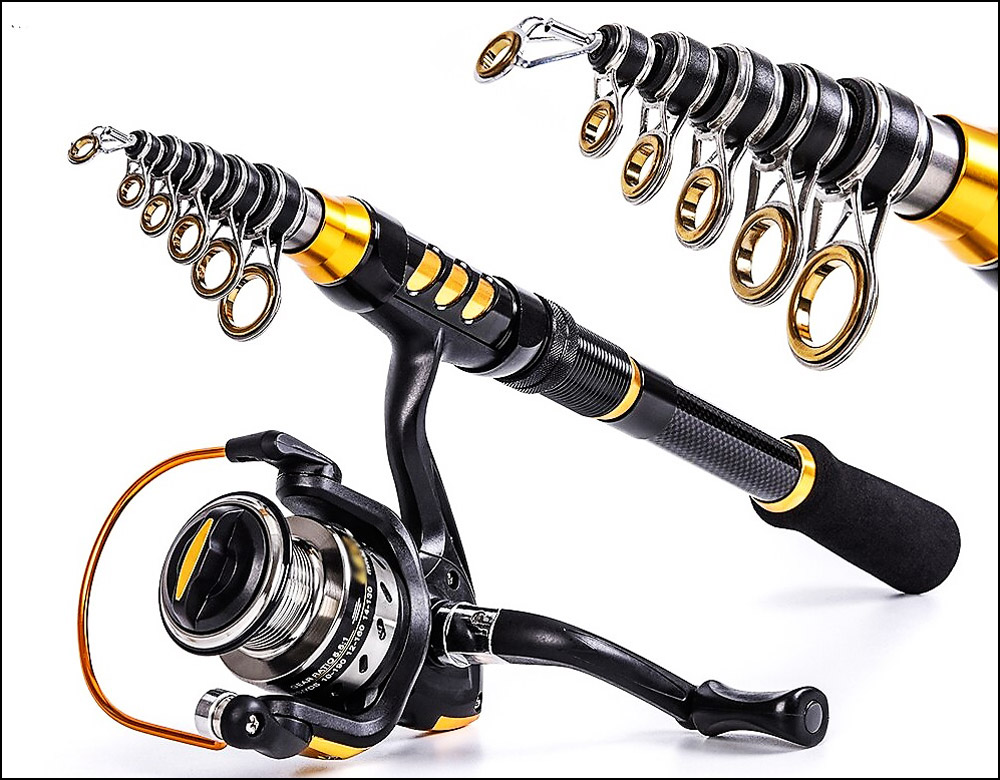
Telescopic fishing rods are designed to collapse down to a short length and open to a long rod. Their portable nature makes them perfect for travelers or hikers who enjoy fishing on their trips. Despite their convenience, they still offer excellent functionality for a variety of fishing types.
Understanding the different types of fishing rods and when to use them is essential in choosing the right tool for your angling adventures. Remember, the type of rod you select should match your skill level and the style of fishing you plan to do. 🎣👍
🎦Video YouTube: Bass Fishing for Beginners – How to Choose a Fishing Rod – How to Fish
🧐 Factors to Consider When Choosing a Fishing Rod
When choosing a fishing rod, several key factors come into play. Each has its role in determining how the rod performs and suits your fishing style and needs.
📏 Length of Rod
The length of a fishing rod influences its casting ability and leverage for reeling in fish. Shorter rods (6 feet or less) are ideal for short casts & fighting fish, while longer rods (7 feet or more) are best for long casts and big water fishing. For beginners, a rod in the range of 7-8 feet often provides a good balance of casting distance and control.
🏗️ Material of Rod
The rod’s material impacts its weight, balance, and sensitivity. Here are three common materials used:
- Graphite: Graphite rods are light and stiff, offering excellent sensitivity. They’re ideal for detecting subtle fish bites but are more prone to breaking than other types.
- Fiberglass: Fiberglass rods are heavier but extremely durable. They are less sensitive than graphite rods but can handle heavy loads making them great for big game fishing.
- Composite (Graphite/Fiberglass): Composite rods offer a balance between sensitivity and durability. They’re ideal for those who want the best of both worlds.
For beginners, a composite rod could be the best bet as it offers the right mix of strength, durability, and sensitivity.
💪 Power and Action
Power refers to the rod’s resistance to bending. Rod power ranges from ultra-light to heavy. Lighter power rods are best for small species like trout and panfish, while heavy power rods are ideal for large fish like catfish and muskie.
Action describes where a rod bends. Fast action rods bend at the top third or less of the rod, medium action rods bend at the top half, and slow action rods bend starting in the lower third of the rod. Fast-action rods are good for big fish, while slow-action rods are better for small fish.
The power of a rod correlates directly with the weight of the cast – basically, how heavy a bait the rod can handle. This is also often referred to as the ‘casting weight’. It’s usually measured in grams or even pounds. Here’s how I understand the rod power classes:
| Category | Casting Weight Range | Explanation |
|---|---|---|
| Ultra-light | 1-10g | Ideal for targeting small species like trout or panfish, where delicacy is crucial. They are suitable for lightweight lures and baits. |
| Light | 10-20g | These rods work well for small to medium-sized fish species, providing a balance of strength and sensitivity. Great for diverse lure or bait options. |
| Medium | 20-40g | Medium rods are versatile tools suitable for a wide range of moderate-sized fish species. They handle a good range of lure weights. |
| Heavy | 40-80g | Designed for larger fish species, these rods can handle heavier lures and provide the strength needed to wrestle with the big ones. |
| Extra Heavy | 80-150g | Extra Heavy rods are often used for sea spinning, where the size and power of the fish demand a sturdy rod. They are made to handle substantial lures. |
| Super Heavy | Above 150g | Reserved for big game sea fishing, these rods are designed to handle very heavy lures and the tremendous power of large marine species like tuna. |
Each category has its unique features, and it’s essential for the angler to choose a rod that matches the fishing conditions and the targeted species. Always consider your specific fishing environment, lure or bait type, and the species of fish you’re aiming to catch when selecting a rod.
I hope this helps clarify the concept of rod power. Keep in mind, choosing the right power is crucial for your fishing success. 🎣💪 As a beginner, a medium power, medium action rod is a good starting point as it can handle a variety of fishing conditions.
💍 Test of Fishing Rods
Speaking from my personal experience, it’s crucial to understand the concept of a fishing rod’s ‘test‘. This basically refers to the range of bait weight the rod can effectively handle. Interestingly, the test can be measured in grams or ounces. So, when you’re buying imported gear and see the ‘oz’ marking, remember that it stands for ounces. To make it easy for you, 1 ounce is approximately 28 grams. Here’s a simple guide I use to match the bait weight with the rod class:
| Category | Test Weight Range | Explanation |
|---|---|---|
| Ultra-light | 1-7g | These rods are ideal for catching very small species of fish, like trout or panfish. They are perfect for lightweight lures and baits. |
| Light | 3-14g | Light rods work well for small to medium-sized fish species and allow more delicate presentations of lures and baits. |
| Medium-light | 5-20g | These rods can handle a variety of fishing situations, perfect for anglers targeting slightly larger fish species but still need finesse. |
| Medium | 10-30g | Medium rods are versatile and are ideal for anglers targeting a wide range of fish species of moderate size. |
| Medium-heavy | 15-40g | These rods have the strength to handle larger lures and bigger fish, while still offering some degree of sensitivity. |
| Heavy | 20-50g | Heavy rods are designed for larger species of fish, where strength is more important than sensitivity. |
| Extra Heavy | 60g and higher | These rods are used for big game fishing or when targeting very large species of fish, often from boats or when surf fishing. |
Also, a note on fishing rod types based on their action or ‘system‘. Rods with fast action have a stiff structure, and only the top part bends when casting. On the other hand, slow action rods bend along their entire length, giving them a more flexible profile. Hope this helps and adds to our collective understanding! 🎣👍
🖐️ Handle and Grip
Handles can be made from a variety of materials including cork, EVA foam, and even wood. The right choice depends on your personal preference. Cork and EVA foam are the most popular due to their comfort and durability. For beginners, it’s important to choose a handle that feels comfortable in your hand and matches the kind of fishing you’ll be doing.
🧿 Rod Rings
A very important part of the fishing rod, which is designed to evenly distribute the load throughout the rod. A large number of rings will be able to show the maximum strength potential, and will not allow the fishing rod to break.
Guides rods, primarily refer to their ability to handle different types and sizes of fishing lines. This capacity directly impacts the fishing rod’s performance, casting distance, and line control.
Fishing rod rings need to be large enough to allow the line to pass through smoothly, even when it’s under tension from a caught fish or during casting. The diameter and type of the fishing line being used greatly influence the required ring capacity.
In addition, rod rings should be able to withstand the wear and tear caused by the friction of the line moving against them. Therefore, they often have inserts made of hard, smooth materials like ceramic, which help to reduce friction and increase the lifespan of both the guides and the line.
The crucial aspect of angling gear – is the classification of fishing rod rings! When it comes to fishing rods, the devil is in the details, and one such detail is the rod rings, also known as guides. These seemingly minor components play a vital role in your fishing experience, affecting the rod’s performance, casting distance, and line control.
The rings are characterized by their size, method of attachment to the rod, and even their design. From removable and foldable types to roller, split, triangular, and even built-in rings – the variety is extensive and fascinating. They are typically attached to the rod using stand support, ensuring the line flows smoothly.
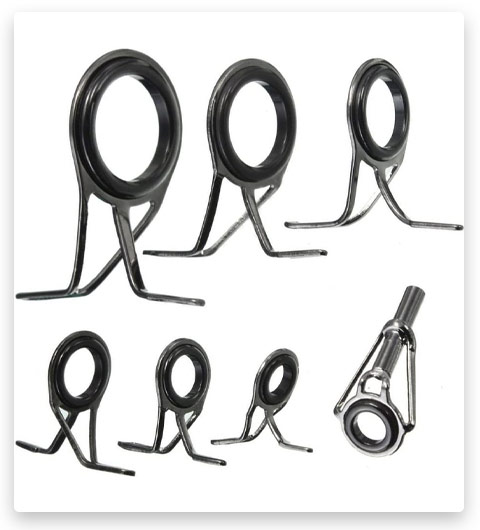
💰 Price
Finally, price is a crucial factor. High-end rods offer top quality, but that doesn’t mean you need to break the bank for your first fishing rod. Many affordable rods offer great value and performance. It’s recommended that beginners start with a less expensive model while they learn and discover their preferences.
Remember, the best rod for you is one that fits your style, feels right in your hands, and falls within your budget. Take the time to consider these factors, and you’ll be on your way to making a great choice. 🎣💡
The Optimal Standard Characteristics of Rod for Beginners
| Characteristic | Optimal Standard for Beginners | Explanation |
|---|---|---|
| Length of Rod | 6-7 feet | The length of the rod impacts casting distance and control. A 6-7 foot rod is a versatile size that allows beginners to master casting techniques without being unwieldy. |
| Power | Medium | The power of a rod refers to how much force it takes to bend the rod. Medium power rods are versatile and can handle a variety of fishing situations and species, making them an excellent choice for beginners. |
| Action | Moderate | Action describes where a rod flexes when pressure is applied. Moderate action rods flex in the middle, providing a balance between sensitivity and strength. This makes it easier for beginners to detect bites and fight fish. |
| Test of Fishing Rod | 6-12 lbs | The test of the fishing rod is the range of line strength the rod is designed to handle. A 6-12 lb test rod is suitable for a variety of smaller to medium-sized species which are typically targeted by beginners. |
This table provides a general guideline. The optimal choice will also depend on the specific conditions and species the beginner angler intends to fish. It’s always a good idea to seek advice from experienced anglers or local fishing supply stores to choose the best rod for specific needs.
🎦Video YouTube: A Beginner’s Guide to Buying Fishing Gear
🔎 Handpicked for Beginners: Top 3 Fishing Rods Reviewed
Navigating the myriad options for fishing rods can be overwhelming, especially for beginners. Here, we’ve put together a list of beginner-friendly fishing rods, each with a detailed review, to help you make an informed decision.
1️⃣ PLUSINNO Fishing Rod and Reel Combo
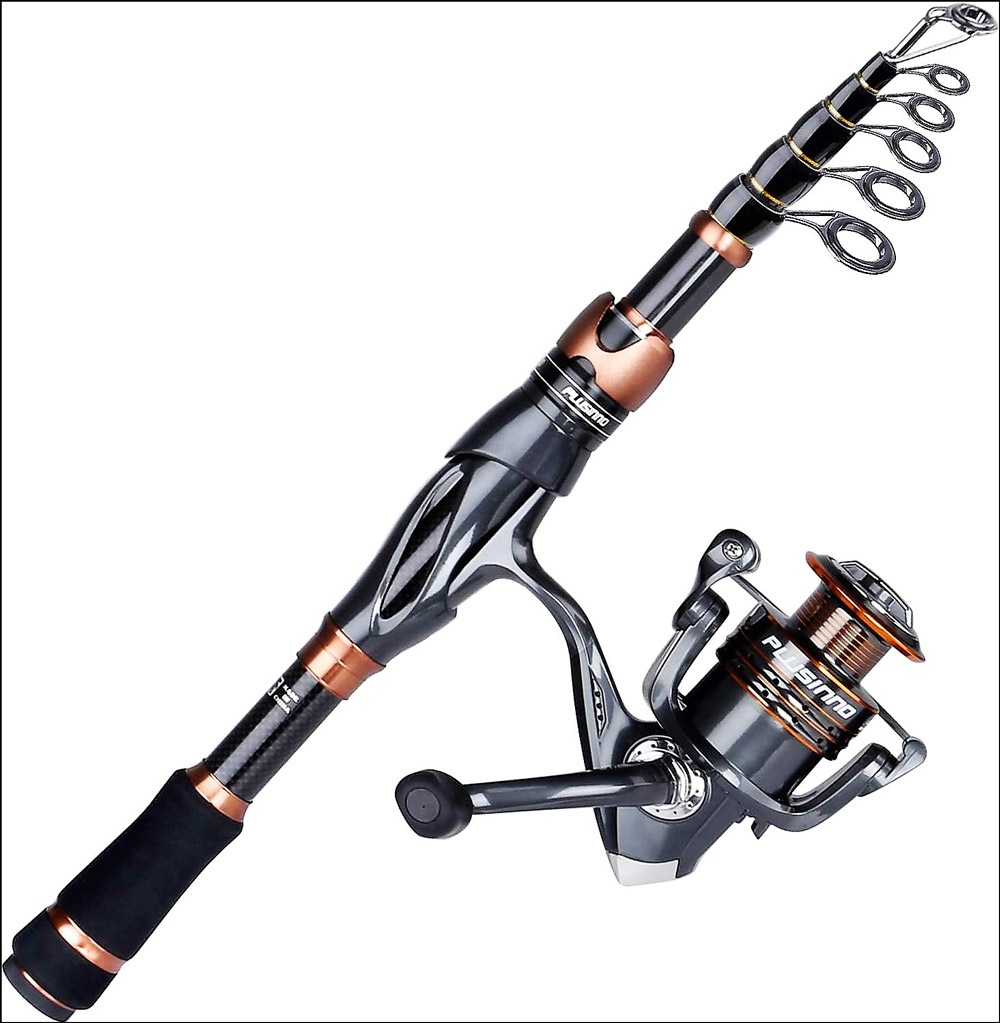
The PLUSINNO Fishing Rod and Reel Combo is an all-inclusive package designed with beginners in mind. This combo includes a telescopic rod, a spinning reel, lures, hooks, a carrier bag, and even some basic lines.
Introducing the PLUSINNO Fishing Rod and Reel Combo, a comprehensive package designed to elevate your fishing experience. This exceptional product is a favorite among fishing enthusiasts, blending functionality, durability, and ease of use in one complete set.
The rod included in this combo is a telescopic fishing rod, ingeniously designed for easy storage and transport. Constructed from high-density 24-ton carbon fiber and E-Glass composite, the rod expertly balances flexibility and strength, ensuring optimal performance during both casting and retrieval. The construction material also guarantees durability, allowing the rod to withstand the demands of different fishing environments.
The PLUSINNO combo comes with an exquisite HA 3000 fishing reel. It’s a spinning reel with a robust and corrosion-resistant frame, ideal for both fresh and saltwater fishing. The reel is equipped with an instant anti-reverse system, providing smooth performance and minimizing line tangling. It also features an efficient gear ratio of 5.2:1, facilitating quick retrievals.
Ergonomics haven’t been overlooked in the design of this combo. The rod boasts a comfortable anti-slip handle, providing a firm grip even in wet conditions. The reel seat, made from corrosion-resistant stainless steel, securely fastens the reel to the rod, ensuring it stays in place during your fishing adventure.
The rod features aluminum oxide guide inserts, known for their smooth surface and durability. They effectively reduce line friction, allowing for longer casts and reducing the chances of line breakage. To ensure you’re ready to fish right out of the box, the PLUSINNO Fishing Rod and Reel Combo include a spool of multifilament line pre-wound onto the reel.
PLUSINNO thoughtfully includes some handy extras in this combo set. You’ll find a range of fishing lures, hooks, and other essential accessories included in the package. Also, a protective carry bag ensures safe and convenient transportation of your gear.
2️⃣ Ugly Stik GX2 Spinning Rod
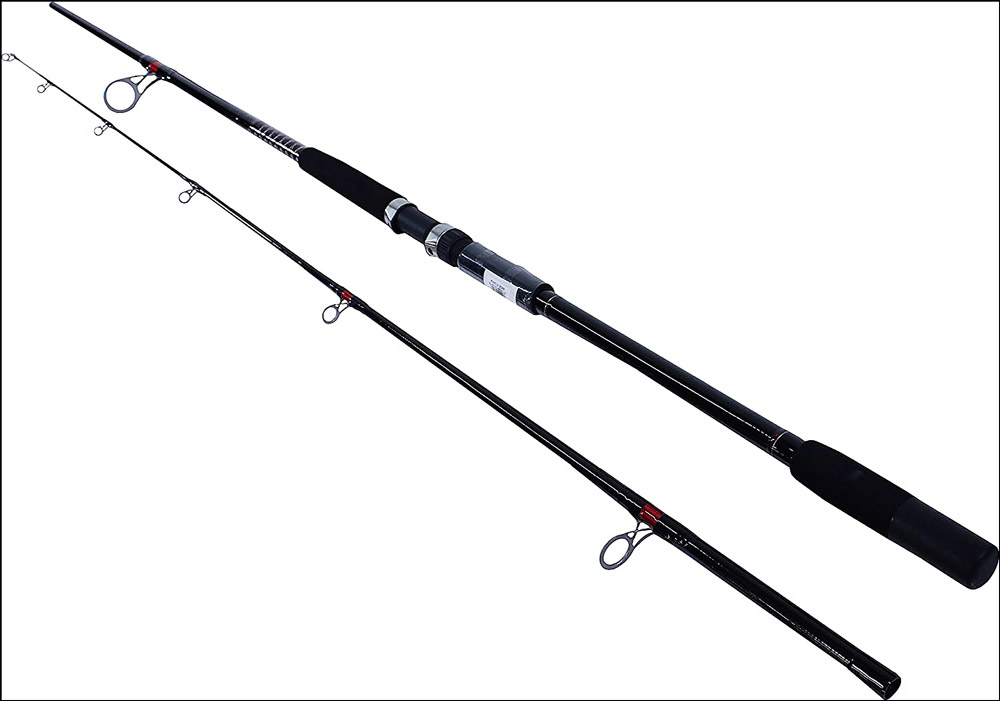
The Ugly Stik GX2 is renowned for its durability and performance. Constructed with a combination of graphite and fiberglass, it offers a nice balance of sensitivity and strength.
Step up your fishing game with the Ugly Stik GX2 Spinning Rod, a renowned staple in the fishing community for its strength, durability, and high performance. Built with Ugly Stik’s longstanding quality and dedication to excellence, the GX2 is an exemplary model of modern fishing rod design, ready to stand the test of time and help you reel in those memorable catches.
The Ugly Stik GX2 is a one-piece spinning rod constructed with a unique blend of graphite and fiberglass, creating a robust yet lightweight structure. This combination produces a rod with a great balance of sensitivity and durability. The rod is designed to detect the slightest nibble with its clear tip design, yet sturdy enough to withstand the struggle of reeling in larger fish.
One of the standout features of the Ugly Stik GX2 is its one-piece stainless steel Ugly Tuff™ guides. These guides are designed to be incredibly durable, capable of withstanding heavy use without the insert popping out. They are also compatible with all types of fishing lines, including braided lines, providing you with more versatility in your fishing expeditions.
Comfort is key when it comes to long fishing sessions. The Ugly Stik GX2 Spinning Rod boasts an EVA grip, known for its lightweight, durability, and comfort. The handle’s length varies depending on the rod’s length, but each one is designed to provide a comfortable grip, reducing fatigue during long fishing sessions.
The Ugly Stik GX2 is available in a range of sizes and power ratings, from ultra-light to heavy, and lengths from 4’6″ to 9′. This makes the GX2 a highly versatile option, suitable for a variety of fishing conditions, whether you’re fishing in freshwater or saltwater, going after small panfish, or wrestling with bigger game fish.
The GX2 maintains the classic Ugly Stik diamond wrap pattern design but adds a modern touch with updated graphics and a sleek matte black finish. This brings a sense of sophistication and style to your angling gear.
3️⃣ Shimano Solara Fishing Rod
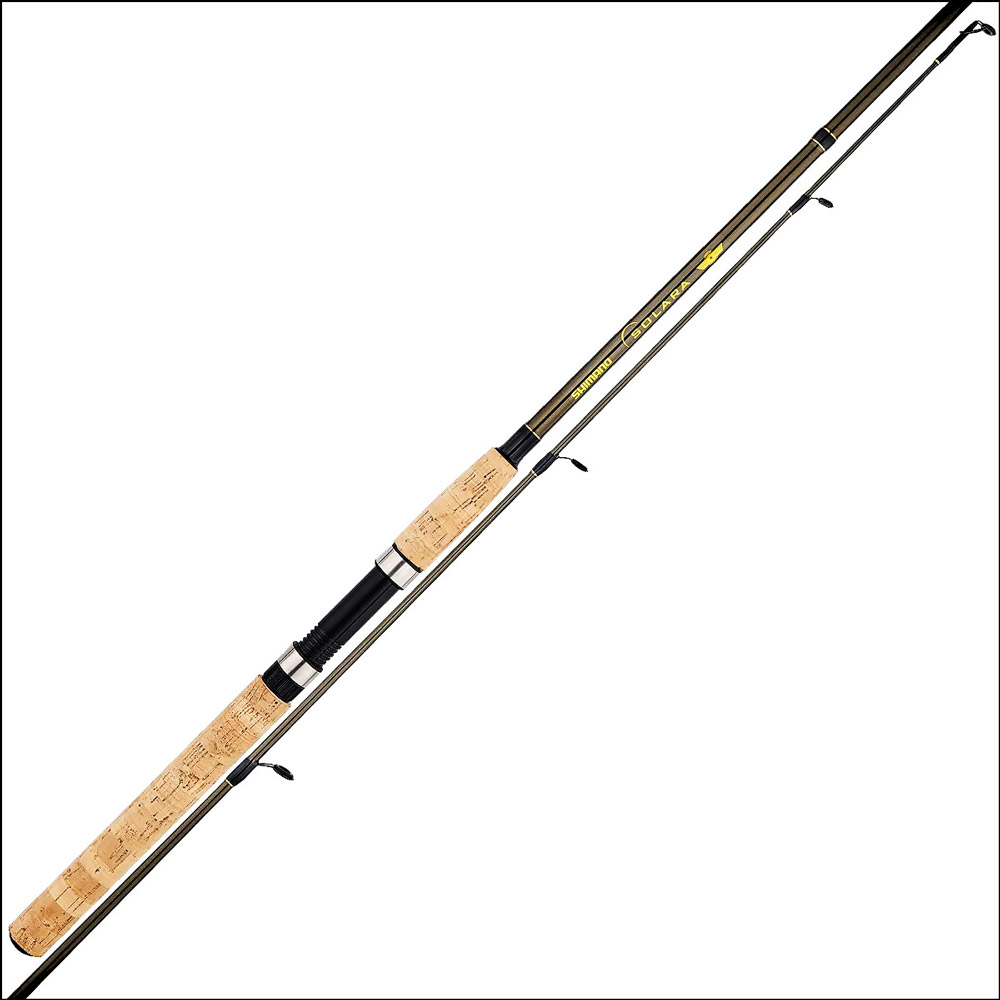
The Shimano Solara is designed for those ready to level up from beginner gear. Made of durable aero glass, this rod is lightweight yet powerful. It’s a two-piece model, making it convenient for travel.
Gear up for your next angling adventure with the Shimano Solara Fishing Rod. Renowned for its top-notch quality and consistent performance, the Shimano Solara provides an unrivaled fishing experience, perfectly tailored for those passionate about angling.
The Shimano Solara rod is a two-piece rod, designed for easy transportation without compromising its strength and performance. Made with durable aero glass blank construction, the rod offers superior sturdiness, maintaining enough flexibility to feel the fish on the line.
The rod is fitted with reinforced aluminum oxide guides. These guides are corrosion-resistant, making them durable and reliable over time. Their smooth surface ensures less friction, allowing for longer casts and minimizing wear and tear on your fishing line.
The handle is made from comfortable cork material, offering a secure and firm grip even in damp conditions. It also adds a touch of classic appeal to the rod’s appearance. The Shimano Solara features a solid-locking graphite reel seat that securely holds the reel in place during your fishing sessions.
The Shimano Solara Fishing Rod comes with a medium power rating, making it versatile enough for various fishing conditions and species. Its fast action allows for improved casting distance and precision, while also providing the strength needed for setting the hook and reeling in fish.
The Shimano Solara presents a clean, sleek look with its black and yellow design. This rod not only performs well but also looks impressive, adding an aesthetic appeal to your fishing gear.
Each of these rods offers great features for beginners, but remember that the best rod for you will depend on your personal needs and preferences. Keep the factors discussed in Part III in mind as you consider these recommendations. 🎣👍
🔧 Rod Longevity: Usage Tips for Prolonged Performance
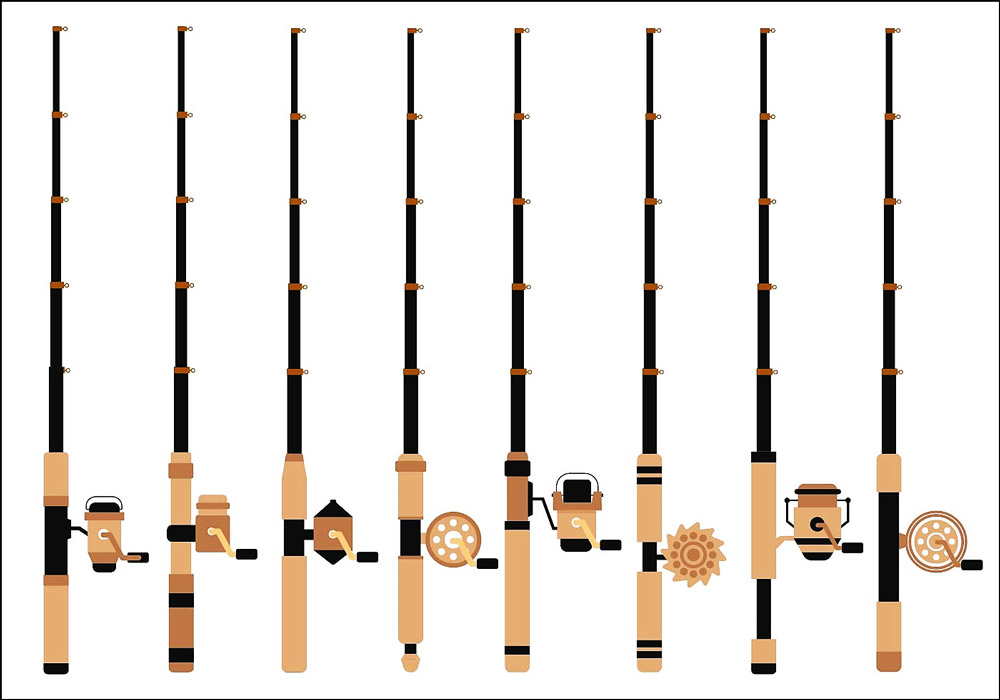
Your fishing rod is an investment. Keeping it in top shape not only prolongs its life but also ensures it performs optimally. Here are some maintenance tips to help you take care of your rod.
🛀 Cleaning Your Fishing Rod
- After each use, rinse your rod with fresh water. This is especially crucial after saltwater fishing to prevent corrosion. Be sure to dry it thoroughly afterward.
- Clean the rod with mild soap and a soft cloth or sponge. Pay special attention to the handle and reel seat, where dirt often accumulates.
- Regularly check and clean the guides (rings). Use a cotton swab or soft cloth to remove any dirt.
- Apply a rod conditioner or silicon-based spray to the rod for extra protection.
🏠 Storing Your Fishing Rod
- Never store your rod while it’s wet or dirty. Moisture or grime can damage the rod material and the reel seat.
- Use a rod rack or holder for storage. This keeps the rod off the ground and prevents it from bending or warping.
- If your rod is collapsible, store it collapsed. This reduces the chance of accidental damage.
- Store your rod in a cool, dry place. High temperatures and humidity can degrade the rod material over time.
🎣 Handling and Usage Tips
- Don’t use your rod to pull or drag a large fish. Use a net or a gaff instead to avoid breaking the rod.
- Avoid high-sticking, which is when the rod forms an extreme angle with the line. This can put too much stress on the rod and cause it to break.
- Carry multiple rods in a protective case if you’re traveling with more than one to prevent them from clashing and causing damage.
- Proper care and handling are key to prolonging the life of your fishing rod. Remember, a well-maintained rod can offer you many years of enjoyable fishing. 🎣🛠️
How to Read the Marking on a Fishing Rod
| Marking | Explanation |
|---|---|
| Length | This marking usually appears as a combination of numbers and a single quote (‘). For example, a marking of 7’6″ would indicate a rod that is 7 feet, 6 inches long. |
| Line Weight | This marking is usually given in lbs (pounds). It indicates the strength of the fishing line that the rod is designed to support. For example, a marking of 10-20lb indicates that the rod is suitable for a fishing line with a strength of 10 to 20 pounds. |
| Lure Weight | This marking indicates the weight of the lure that the rod can effectively cast. It’s usually given in ounces (oz). For example, a rod marked 1/4-3/4oz is designed to cast lures weighing between 1/4 and 3/4 of an ounce. |
| Power | This marking indicates how much pressure it takes to flex the rod. Common designations include Ultra-Light, Light, Medium-Light, Medium, Medium-Heavy, Heavy, and Extra Heavy. |
| Action | This marking indicates where the rod flexes along the blank. Common designations include Fast, Moderate, and Slow. Fast action rods flex mostly near the tip, Moderate action rods flex more in the middle, and Slow action rods flex down into the butt section. |
❓ FAQ: Choose Your First Rod Like a Pro!
🏁 Conclusion: First Cast – Embarking on Your Fishing Journey
We’ve covered a lot of ground in this guide to choosing the perfect fishing rod for beginners. 🎣📘
Starting from understanding the basics of fishing rods, we’ve explored their history and importance in angling. We dived into the different types of rods like spinning, baitcasting, and fly rods, highlighting their unique features and uses.
From there, we tackled the crucial factors to consider when picking out a rod, such as its length, material, power, and action. We discussed the importance of the handle’s comfort, and of course, the role of price in making your final decision.
We also offered some top-notch recommendations for beginner-friendly rods, taking into account their pros and cons. Finally, we shared essential tips on maintaining your fishing rod to ensure it remains in great shape for your many fishing trips to come.
Fishing is an art, a sport, and a science, all rolled into one. The right rod is a critical tool that will help you enjoy your fishing experiences more fully. So take your time, don’t rush the process, and make sure you choose a rod that best suits your needs and preferences.
Remember, everyone was a beginner at some point – even the pros. So don’t be discouraged if things seem overwhelming at first. With patience, practice, and the right gear, you’ll be reeling in the big ones before you know it.
Welcome to the wonderful world of fishing! Tight lines and happy fishing! 🎣🚣♂️👍
📢 Spread the Love of Angling: Share This Article
We hope this guide has been a helpful companion in your quest to find the perfect fishing rod for beginners. But the journey doesn’t have to stop here! 🎣🌟
If you found this information useful, please don’t hesitate to share it with your fellow aspiring anglers, friends, and family. You never know, you might inspire someone else to embark on their own fishing adventure! 🔄🤝
And remember, every angler’s journey is unique. So, we’d love to hear from you. What has your experience been like? Do you have any questions that weren’t covered here? Or perhaps some tips of your own that could help others? Drop your thoughts, queries, and wisdom in the comments below.
Your insights can make this fishing community richer and more diverse. So don’t be shy, reel in those comments! 📝💭🎣
Let’s keep the conversation going and continue learning together. Here’s to your fishing success! 🥳🎣🏆

I live in Tenerife (Canary Islands) for the last 10+ years and share my daily fishing experiences on my website. Many years of personal experience as a fisherman and the vast experience of my friends allow me to write professionally on any fishing topics (from choosing a flashlight and equipment to deep-sea fishing).
All of my advice is based on practical real-world experience and will be useful to both novice anglers and professionals. Read more about the author.
Affiliate Disclosure: FishReeler.org sometimes gets paid for listings, through sponsors or affiliate programs like Amazon, Ebay, Cabelas, Bass Pro Shop, Shimano, Daiwa, Rapala, Renn, Okuma, KastKing, etс. Clicking a link helps keep FishReeler.org free, at no extra cost to you!
About the author: Each article is verified by the fishing expert Sergio Smirnoff. The articles are written by professional and amateur fishermen with 20+ years of fishing experience.
Note: The views and opinions expressed in this article are those of the authors and do not necessarily reflect the official policy or position of any agency. The articles are for informational purposes only, share your opinions in the comments and join the fishing discussions, let's share our fishing experiences together!

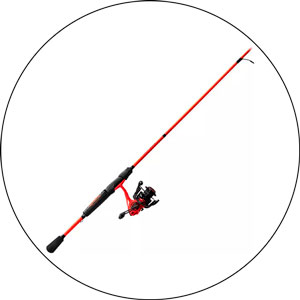
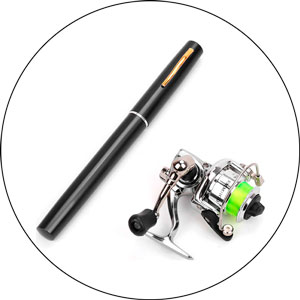
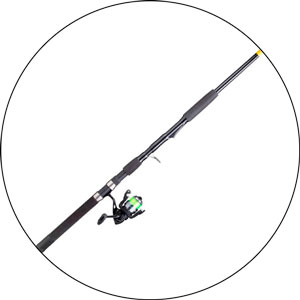
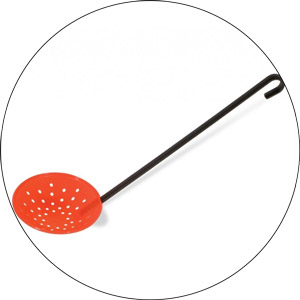
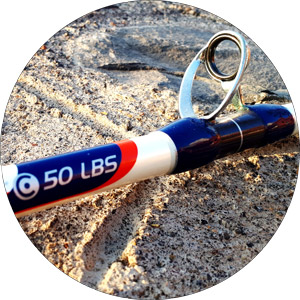
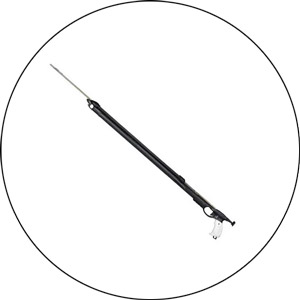
My opinion is this is for beginners. If you’re just starting out with fishing and feeling a little overwhelmed, I recommend checking out your local tackle shop. While you might end up paying a little more than you would online, the staff at the shop can take away a lot of the guesswork and help you save money in the long run by only buying what you really need. They can also give you valuable tips on what baits/lures to use and where to fish. A good shop can get you most of the way there and set you up for success so that you keep coming back for more gear.
Another great option is to find someone local to fish with who can show you the ropes. Fishing can be discouraging at first, especially if you’re not catching anything, but having a mentor can make all the difference in keeping you motivated and learning the skills you need to be successful.
When it comes to gear, I recommend starting off with a spinning setup. If you’re not buying a pre-paired rod and reel, spend a little extra on the reel rather than the rod. You’ll notice a cheap reel much more than a cheap rod. Plus, if you end up really enjoying fishing, you can always transfer that first reel to a nicer rod in the future.
If you’re looking for a first fishing rod, consider an Ugly Stik. While they may not be the best rods out there, they’re fairly inexpensive and built to last. And remember, the most important thing is to get out there and start fishing – you can always upgrade your gear as you go.
If you’re just starting out in fishing, it’s important to consider what kind of fishing you’re interested in. Do you prefer freshwater or saltwater fishing? What types of fish are available in your area? These factors will influence the gear you need to buy.
As many others have mentioned, the Ugly Stik GX2 is a great option for beginners. It’s affordable, durable, and versatile. However, it’s also important to consider the reel that comes with it. For an all-around reel that can handle most freshwater situations, look for one with a 10/200(ish) rating. This means it can store 200 yards of 10-pound test monofilament line on the spool, which is enough for most situations. If you plan on fishing in salt or brackish water and want to use a 30-pound braid, you’ll need a reel that can store around 170 yards of that.
In terms of the rod, a medium-power rod with a fast to extra-fast action is a good choice. Look for a rod in the 6’6″ to 7’6″ range, with a lure weight of 1/8 to 5/8 ounces. This will allow you to use a variety of lures and bottom rigs, making the rod more versatile.
Of course, the best way to get started in fishing is to find a local tackle shop and ask for advice. They can help you find the right gear for your needs and give you tips on where to fish and what bait to use. If possible, try to find someone to fish with who can show you the ropes and help you catch your first fish.
In my opinion, offering recommendations for lower-tiered options when it comes to fishing gear can be tricky. It opens the door to criticism and dissatisfaction from those who are not happy with the suggested items. However, there are still some budget-friendly options out there, such as combos that pair various rods and reels together.
If you’re on a tight budget, it’s worth checking out combo offerings from your preferred brands, though keep in mind that the paired items may not always meet your expectations. For example, the Shimano Sienna combo or the Berkeley Lightning Rod combo might be worth considering. Alternatively, you could visit a big box store and try out some of the gear within your budget. Ultimately, it’s better to start fishing with whatever gear you can afford rather than waiting for the “perfect” setup.
It’s great to hear that you’re interested in fishing! As an avid course angler, I understand how exciting it can be to get started in the sport. My main focus is fishing canals, and I’m based in the UK. If you’re just starting out, don’t feel like you need to spend a lot of money on expensive gear. My grandfather always told me, “You can catch a fish with a stick, some string, and a hook.”
For beginners, I recommend basic waggler float fishing. You can get a rod and reel combo from Amazon or your local tackle shop. Amazon has a few budget-friendly options that are great for beginners, such as the Shakespeare Firebird Spin Combo Rod and Reel.
Here’s a list of the essential items you’ll need:
If you have any more questions or need further help, feel free to ask. I’ve been doing this type of fishing for 17 years and I’m happy to share my knowledge with you. Welcome to the sport, and all the best!
For a beginner angler on a tight budget, I recommend the Spro Xrossover rod with a casting weight of 20 to 60g, priced at 43.99€. If you plan to fish for pike, I suggest getting a rod with a minimum casting weight of 60g. As for the reel, I suggest the Abu Garcia Cardinal 52FD, which you can find at tackleshop.nl. It may not be the highest quality, but it should be sufficient for a beginner.
For the line, Spiderwire lines with a diameter of at least 20mm are suitable for braided lines, which you can get at Fauna for 19.99€. Keep in mind that braided lines are not as resistant to scratches from underwater objects as monofilament lines. So, regularly check for any damage and replace it if necessary. If you’re fishing for pike and zander, I recommend using a leader, preferably Savagegear Fluorocarbon.
The total cost for these items is 87.93€, which is quite affordable for a decent starter set. However, you will still need additional gear such as dobbers, soft baits, leaders, etc.
I’d like to share my thoughts on beginner fishing combos. Personally, I believe that the Zebco 33 is a great option for someone who is just starting out. While some people may view spin cast reels as “kid reels”, I have caught numerous bass and panfish using them from the bank. Even after you move on to using spinning or baitcasting combos, the Zebco 33 can still serve as a reliable backup.
However, if you’re accustomed to using spinning or baitcasting reels, I highly recommend the Abu Garcia brand. The Black Max combo is a great choice for either style, and it’s also very affordable. It’s important to remember that expensive gear isn’t necessary to enjoy fishing, especially when you’re just starting out. The most important thing is to get out there and have fun!
I love the analogy of choosing a fishing rod being like a musician selecting their first instrument – it’s so true! It’s essential to find a rod that suits your style and feels comfortable in your hands. The historical background also added a nice touch – really reminds you that fishing isn’t just a hobby, but a survival technique that’s been used by humans for millennia. Really well-written and informative! 🎣
Thoroughly enjoyed this article, especially the historical context! It’s fascinating to think about how far we’ve come from using primitive hooks and thread to the advanced fishing rods we have today. The guide on how to choose a fishing rod for beginners is also super helpful. I feel much more prepared for my first fishing trip now. Can’t wait to get my hands on my first fishing rod! 👍
This article really struck a chord with me. It’s not just about the technicalities of choosing a fishing rod, but also about understanding the historical and cultural significance of fishing. It made me realize that when we go fishing, we are participating in an activity that our ancestors have been doing for thousands of years. I now feel more connected to the past and can’t wait to continue this tradition with my newly acquired knowledge. 🐟
As an angler who learned through trial and error, I wish I’d come across an article like this when I was starting out. The clear explanations about the basics of fishing rods and the factors to consider when choosing one would have saved me from a few rookie mistakes. Also, the part about ancient fishing techniques and the invention of fishing rods was truly fascinating. Never thought I’d get a history lesson in an article about fishing rods! Great job, very insightful and engaging! 👍
Wow, this article is a real treasure trove for beginners like me! I’ve been looking for something comprehensive that doesn’t just explain what rod to get but also provides a bit of historical background about fishing. I particularly enjoyed the part about the origins of the fishing rod, really puts into perspective how long humanity has been doing this. I can’t wait to pick out my first rod and join in this age-old tradition! 🎣